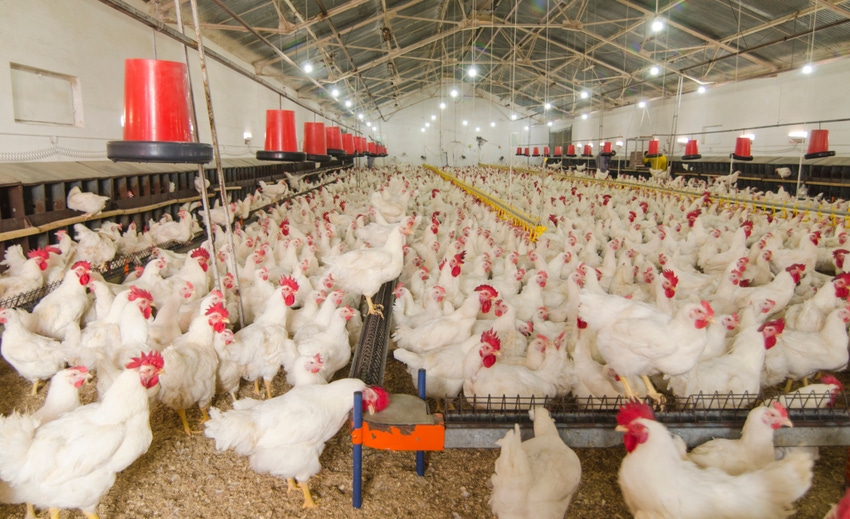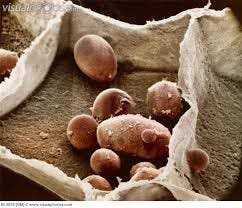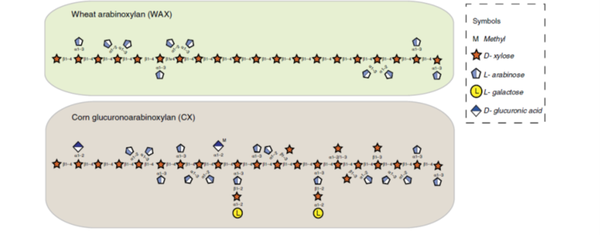Utility of debranching enzymes in poultry feeds
The inclusion of debranching enzymes in an enzyme mix for corn-based diets can wring more nutritional value from feeds.
February 19, 2021

By N.E Ward PhD
Some regions of the world have seen prices for basic feed ingredients skyrocket, with spikes of 150-200% in many areas (https://www.macrotrends.net/). Since feed costs are 65-70% of broiler production costs, nutritionists are pressured more than ever to lower costs without sacrificing bird performance. And it’s no secret that one of the best ways to reduce costs is the addition of enzymes to feeds.
But as our knowledge expands for enzymes such as the carbohydrases, it’s increasingly obvious that the ‘one size fits all’ can no longer be our call to arms. This is because the targeted nonstarch polysaccharides – the NSP – are a complicated assortment of structures, each requiring a different NSP enzyme. In this regard, “debranching enzymes” are increasingly being recognized as an essential in our enzyme mixes (Ward, 2021).
Nonstarch polysaccharides are complicated
About 90% of plant cell walls are built from NSP. Considered as nature’s way of protecting the inner components (ex., protein, lipids, starches; Figure 1) from external forces, these NSPs are interwoven in the tightly bound, water-impervious cell wall. Type of grain, maturity, tissue type, and various agronomic and environmental factors impact the level, type, and composition of NSP. Keep in mind, intestinal secretions include enzymes to digest protein, starch, and lipid, but are void of those that can degrade NSP. And it is the degradation of NSP by carbohydrases that is fundamental in retrieving more energy from feeds. 
Figure 1. Image displaying the inner nutritional components entrapped by cell walls composed of approximately 90% nonstarch polysaccharides
Of the cereal grains, the NSP in corn are more complex than meets the eye. The single most abundant NSP in corn is arabinoxylan, representing over 50% of the total (Table 1) and the substrate for xylanase. The enzymatic breakdown of this huge molecular structure allows two things to happen –
• One, the degradation releases entrapped protein, starch, and lipid for endogenous enzymes to digest (cage effect).
• And two, smaller chunks of arabinoxylan are converted into energy for the bird by bacteria in the lower intestinal tract (prebiotic effect).
However, this simple task is particularly challenging because of the complicated manner in which arabinoxylan and other NSPs are constructed and intertwined. The lack of success when adding only xylanase or glucanase or a combination of protease, a-amylase, and xylanase suggests an alternative enzyme approach is needed for corn-based feeds (Meng et al., 2005; Slominski, 2011; Ravn et al., 2018).
Corn and wheat arabinoxylan differs significantly
Of the cereal grains, corn arabinoxylan is particularly problematic because of two standout reasons –
• High phenol content
• Densely covered xylan main chain
Phenols in corn. Unlike wheat, corn has about 10-times more phenolic bridges that anchor arabinoxylan to other NSPs, and to structural proteins, cellulose, and lignin. Further, the di-ferulic acid (DFA)-to-xylose ratio for corn is high – 24.5 compared with wheat at 4.6 – indicating far more DFA cross-links in corn (Bunzel et al., 2001). Phenols are notorious for lowering solubility, which impedes enzyme degradation and microbial fermentation (Snelders, 2019; Ward, 2019). When phenolic bridges were decreased in corn, for example, carbohydrate solubilization was improved 24 to 46% with enzyme mixtures (Grabber et al., 1998).
Xylan main chain is heavily populated with substituents. The arabinoxylan main chain (called xylan, and composed of individual xylose units connected in a linear configuration) in corn is covered by a canopy of short chemical structures, or “branches”. About 85 to 100% of the xylose units in corn are occupied by these constituents, the primary one being arabinose (Chanliaud et al., 1995; Agger et al., 2010). But for wheat, a study with 90 different varieties found a coverage rate between 30 to 40% (Saulnier et al., 2009), similarly as depicted in Figure 2.
Figure 2. Schematic of two main classes of arabinoxylan (wheat and corn) showing high degree of branched structures with corn relative to wheat. Adapted from Rogowski et al., 2015.
So, why is this important? Well, today’s feed-grade xylanases are from the glycoside hydrolase (GH) 10 and GH 11 families. In order for these xylanases to effectively attack the xylan chain, at least 2 to 4 contiguous xylose units need to be free of attachments. Armed with this information, it is easy to understand why xylanase alone is effective in wheat-based diets, but has minimal success in corn-based diets. Again, one size does not fit all.
An additional concern is that the smaller sections of arabinoxylan with branched structures are not readily utilized by cecal bacteria as food sources. Xylan with a low degree of branching was extensively fermented by Bacteroides spp. whereas heavily populated xylan was not (Payling et al., 2020). The debranching of arabinoxylan goes beyond its simple degradation.
Debranching enzymes for corn
Xylanase efficacy can be boosted simply by removing these structures beforehand with debranching enzymes (Huisman, 2000; Rahman et al., 2003; Sorensen et al., 2007; Agger et al., 2010). This classification of enzymes is comprised of a diverse group, each of which is specific for a particular structure. Important debranching enzymes for corn and other cereal grains include those listed below –
• α-glucuronidase
• ferulic acid esterase
• acetyl xylan esterase
• p-coumaric acid esterase
• α-L-arabinofuranosidase
Furthermore, these helper enzymes may also be important to high protein ingredients. β-fructofuranoside fructohydrolase elevated in vitro and in vivo galactoside hydrolysis by a-galactosidase in soybean meal and canola meal (Slominski, 1994). Similarly, Choct (2015) recognized similar interferences can render pectins resistant to enzyme attack; pectins make up the major NSP in soybean meal (Table 1).
Broiler studies
In a recent study, Ravn et al. (2018) tested the ability of arabinofuranosidase to improve the effectiveness of xylanase in the solubilization of corn fiber. The combination of both enzymes elevated in vitro xylan solubilization from arabinoxylan by more than 4 times (P<0.001) compared with xylanase alone. This was equivalent to 23.6% of the total xylose in corn fiber vs. 0.4% in nontreated control and 6.2% when only xylanase was tested. A feeding trial mirrored the in vitro results to demonstrate that broiler performance improved significantly from this enzyme combination in a corn-based feed.
Even though wheat arabinoxylan is scarcely branched, the addition of two debranching enzymes resulted in marked improvements in in vitro and in vivo studies (Lei et al., 2016; Table 2). In wheat-based diets, broiler performance was superior (P<0.05) when the combination of xylanase and debranching enzymes was fed as opposed to xylanase alone. There were also improvements in several other measurements, including the formation of short chain oligosaccharides and the proliferation of important lower tract bacteria.
Final comments
The chemistry of NSP is particularly challenging, especially in the most common cereal grain for poultry worldwide – corn. The inclusion of debranching enzymes in an enzyme mix for corn-based diets can wring more nutritional value from feeds. As the battle to reduce feed costs goes on, we need to critically evaluate our enzyme choices to maximize our returns.
Literature cited available upon request
Nelson E. Ward Ph.D. , is enzyme lead all species, North America, for DSM.
You May Also Like



